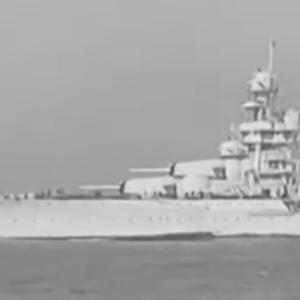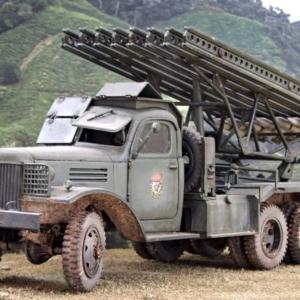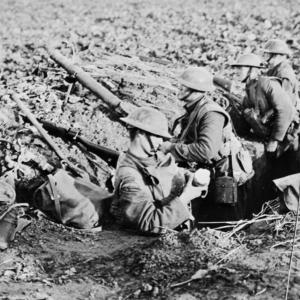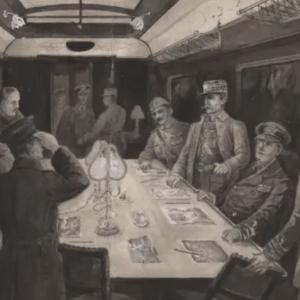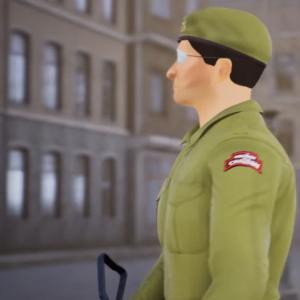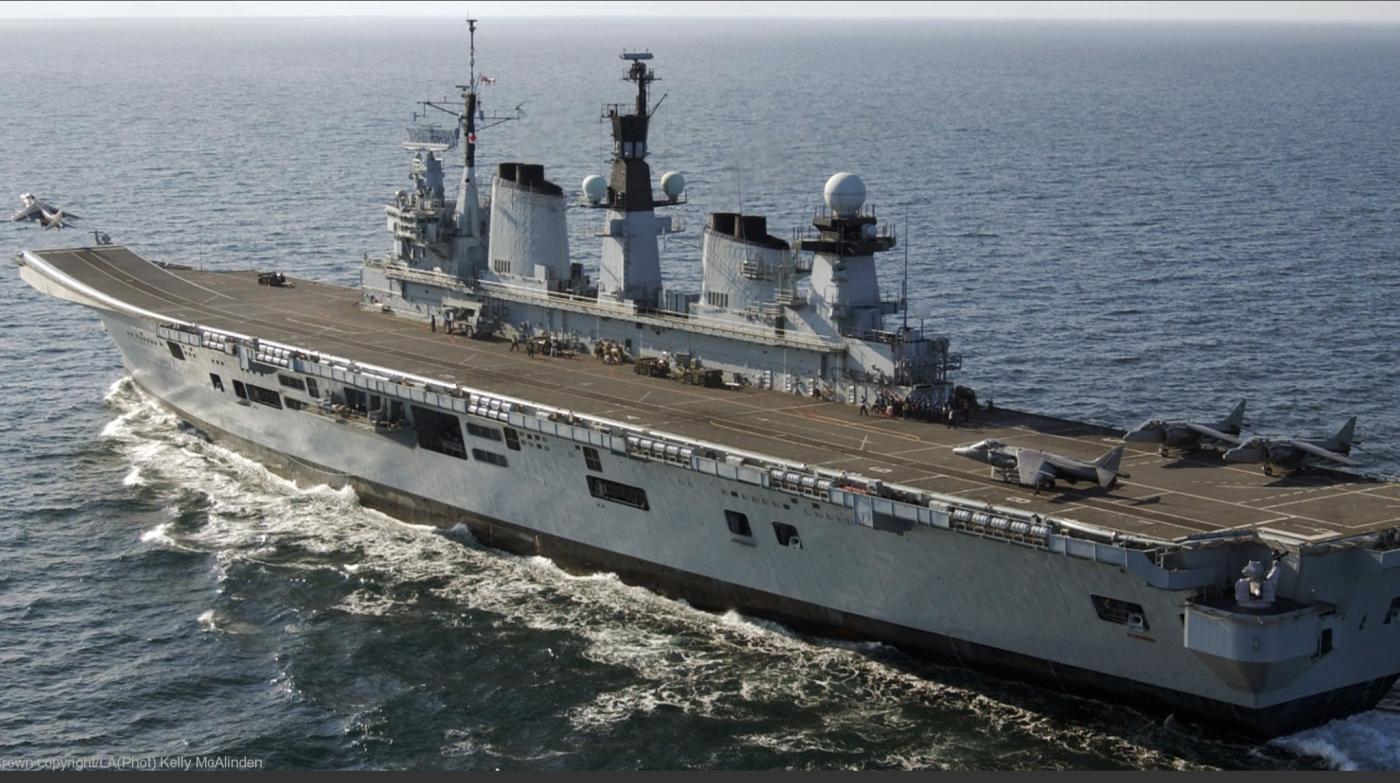
HMS Invincible
Britain’s aircraft carrier HMS Invincible played a pivotal role in modern Royal Navy history, particularly during the Falklands War in 1982. The ship was conceived during a time of changing naval strategy, transitioning from large fleet carriers to more versatile and cost-effective platforms that could support both fixed-wing aircraft and helicopters. The design and development of Invincible emerged from Britain’s need to maintain a global naval presence in the face of diminishing defense budgets and shifting Cold War demands.
HMS Invincible was constructed by Vickers Shipbuilding and Engineering Ltd (VSEL) at their shipyard in Barrow-in-Furness, Cumbria, in the northwest of England. The keel was laid down in 1973, and the ship was launched in 1977. Initially classified as an "anti-submarine warfare carrier" or "through-deck cruiser," Invincible was a product of British naval ingenuity during an era when the construction of large aircraft carriers was deemed financially and politically challenging. The design was a compromise between capability and cost, offering a smaller platform compared to traditional fleet carriers, yet retaining essential air support functions. She was commissioned into the Royal Navy on 11 July 1980.
The design of HMS Invincible reflected the changing nature of naval air power and Britain's strategic requirements. At 19,500 tons full load displacement and approximately 210 meters in length, she was considerably smaller than American supercarriers but still capable of projecting significant power. The ship was designed by the Naval Design Directorate of the Ministry of Defence in collaboration with VSEL, focusing on anti-submarine warfare, air defense, and fleet command capabilities. One of the most distinctive features of the ship was its ski-jump ramp at the bow, which allowed Harrier vertical/short take-off and landing (V/STOL) jets to take off with greater payloads despite the short deck length. The vessel also carried a fleet of Sea King helicopters for anti-submarine duties and search and rescue missions.
HMS Invincible was powered by a combination of four Rolls-Royce Olympus TM3B gas turbines, producing 112,000 shaft horsepower, which enabled the ship to reach speeds up to 28 knots. The propulsion system was designed for rapid acceleration and reduced maintenance compared to conventional steam turbines. The ship featured a centralized command and control center equipped with advanced radar and communication systems for its time, including the Type 996 radar for air search and Type 909 radar for fire control. Armaments included Sea Dart surface-to-air missiles, primarily for self-defense against incoming aerial threats, and close-in weapon systems (CIWS) for short-range protection.
The true test of Invincible came during the Falklands War in 1982, following Argentina's invasion of the British overseas territory. Along with HMS Hermes, Invincible formed part of the Royal Navy’s carrier task force dispatched to the South Atlantic. Her role was critical in providing air superiority, reconnaissance, and logistical support throughout the conflict. The Harrier jump jets aboard Invincible, particularly the Sea Harrier variant, played a decisive role in countering Argentine air attacks, securing control of the airspace, and supporting ground operations. The ship’s Sea King helicopters also performed anti-submarine patrols, search and rescue missions, and troop transportation.
HMS Invincible served as the flagship for a portion of the conflict and was instrumental in the success of the British campaign to retake the islands. The versatility and performance of the ship and her air group demonstrated the strategic value of a smaller, agile carrier with V/STOL capability. After the Falklands War, Invincible returned to the United Kingdom and underwent a series of modernizations, including the removal of the Sea Dart missile system to expand flight deck space and enhance her aviation facilities.
Throughout her service life, HMS Invincible continued to be deployed in various operations, including NATO missions and peacekeeping efforts. She was decommissioned in 2005 and later scrapped, but her legacy lives on in British naval doctrine. The success of the Invincible-class carriers, which also included HMS Illustrious and HMS Ark Royal, validated the concept of compact carriers with flexible air wings and influenced future British carrier design, eventually leading to the larger and more capable Queen Elizabeth-class carriers of the 21st century.

